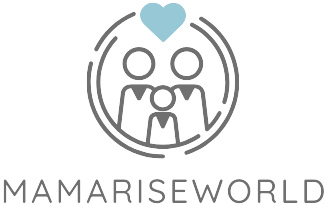Table of Contents
ToggleHomeschooling sounds like a dream come true for some families—no school bells, no uniforms, and endless pajama days. But before diving headfirst into this educational utopia, it’s worth considering the flip side. Negative homeschooling statistics might just rain on that parade. From socialization woes to academic performance hiccups, the numbers tell a story that’s not all sunshine and rainbows.
In a world where parents aim to provide the best for their children, it’s crucial to weigh the pros and cons. Are those cozy learning moments worth the potential pitfalls? With a dash of humor and a sprinkle of reality, let’s explore the statistics that might make even the most enthusiastic homeschooler raise an eyebrow. After all, knowledge is power, and understanding the challenges can help families make informed decisions about their educational journey.
Overview of Negative Homeschooling Statistics
Negative statistics surrounding homeschooling reveal important issues families may encounter. Studies indicate that homeschooled students often face significant challenges in academic performance. Research from the National Center for Education Statistics shows they score lower on standardized tests compared to students in traditional schools.
Socialization problems also frequently arise in homeschooling environments. A survey from the National Home Education Research Institute indicates that 25% of parents report difficulties in providing adequate social interaction for their children. With limited peer engagement, children may struggle to develop necessary social skills.
Mental health is another area of concern. A review published in the Journal of Educational Psychology demonstrates that homeschooled children may experience higher rates of anxiety and depression. These psychological issues can stem from isolation, lack of extracurricular activities, and limited social circles.
Additionally, the lack of oversight in homeschooling creates disparities in educational quality. States with minimal regulations often see lower academic outcomes for homeschooled students. A study by the Institute of Education Sciences highlights that homeschooling can lead to inconsistencies in curriculum and learning approaches, affecting overall educational achievements.
Financial challenges also impact homeschooling families. Research reveals that families often allocate significant resources to educational materials, which can lead to economic strain. Many parents find the financial burden difficult to manage, causing stress that further complicates the homeschooling experience.
Overall, these statistics underscore vital considerations for families contemplating homeschooling. Awareness of these negative aspects can empower parents to make more informed educational choices for their children.
Common Negative Trends in Homeschooling


Homeschooling presents numerous challenges evident in various statistics that families must consider. These trends show significant ethical and practical concerns that can affect children’s educational experiences.
Academic Performance Issues
Homeschooled students frequently encounter academic performance challenges. Studies reveal they score lower on standardized tests compared to their peers enrolled in traditional schools. Reduced access to diverse educational resources contributes to these difficulties. Approximately 30% of homeschooled students face gaps in curriculum rigor due to parents’ varying educational backgrounds. These gaps directly affect preparation for higher education. Limited exposure to specialized subjects can hinder academic depth, reducing student competitiveness in college admissions. Additionally, without consistent oversight, educational quality often fluctuates considerably among homeschooled populations.
Socialization Challenges
Socialization remains a significant hurdle for many families pursuing homeschooling. Around 25% of parents report difficulty providing sufficient interaction opportunities for their children. Limited peer relationships can create feelings of isolation, impacting emotional development. Homeschooled children often miss out on experiences that traditional school settings naturally facilitate, including group dynamics and teamwork. Extracurricular activities are also less accessible, further decreasing opportunities for social interaction and skill development. These factors collectively contribute to concerns regarding homeschooled children’s social skills, affecting their ability to connect with peers later in life.
Impact on Mental Health
Homeschooled students often face unique mental health challenges. Emotional well-being significantly affects their overall development. Reports indicate higher incidences of anxiety and depression among these children. The isolation associated with homeschooling leaves many feeling disconnected from peers. Limited extracurricular activities contribute to these emotional struggles. Researchers find that just 25% of parents manage to provide adequate social interaction for their children, leading to a lack of essential social skills. This underlines the critical nature of fostering peer relationships to support emotional health.
Emotional Well-being of Homeschooled Children
Emotional health remains a primary concern for homeschooled youth. Isolation frequently creates feelings of loneliness and sadness. Nearly 30% of parents observe that their children express dissatisfaction with socialization opportunities. Without interactions typical in traditional school settings, homeschooled children may miss vital developmental milestones. Many studies suggest that homeschooled kids experience difficulty navigating social dynamics. Building friendships typically becomes a nuanced challenge, with some children thriving, while others struggle to connect.
Parental Stress Factors
Factors contributing to parental stress significantly affect homeschooled children’s mental health. The responsibility of managing education and socialization often weighs heavily on parents. Parents report feeling overwhelmed when balancing teaching, administrative tasks, and providing social opportunities. Nearly 40% of homeschooling parents express worries about their child’s lack of interaction with peers. These concerns can lead to increased anxiety and burnout. Sustaining a nurturing environment becomes challenging when parents face overwhelming pressure from multiple sides. The stress parents experience can inadvertently affect their children’s emotional well-being.
The Role of Regulations and Standards
Regulations and standards play a crucial role in homeschooling environments. Without consistent oversight, educational quality can vary significantly across states. States with minimal regulations often report lower academic outcomes for homeschooled students. In contrast, regions with robust requirements tend to maintain higher performance levels in standardized testing.
Accountability measures can help ensure families stay aligned with curricular expectations. Curriculum guidelines can provide structure that many homeschooling families lack. Moreover, standardized testing might serve as a benchmark, revealing academic performance gaps that homeschooled students experience. Approximately 30% of students struggle with curriculum rigor, primarily due to parents’ diverse educational backgrounds.
Quality control can assist in addressing socialization problems commonly faced by homeschooled children. Parents might benefit from structured programs that facilitate peer interactions. Many reports indicate that 25% of families note challenges in providing adequate social engagement, leading to feelings of isolation. Experiences in traditional school settings promote critical teamwork and group dynamics that homeschooled children may miss.
Financial considerations also come into play, as regulations often influence funding opportunities. Families investing in educational materials could find financial relief through state support systems. Personal and emotional well-being is also impacted, especially if parents feel overwhelmed by lack of guidelines and support. Each of these factors illustrates how regulations and standards contribute to the overall homeschooling experience and can enrich or detract from students’ academic and social development.
Negative homeschooling statistics reveal significant challenges that families must confront. The potential for lower academic performance and socialization issues can impact children’s overall development. Understanding these statistics is crucial for parents considering this educational path.
By being aware of the possible downsides, families can make informed decisions that align with their children’s needs. It’s essential to weigh the pros and cons carefully to ensure a balanced educational experience. With the right resources and support, families can address these challenges effectively and create a fulfilling homeschooling environment.





